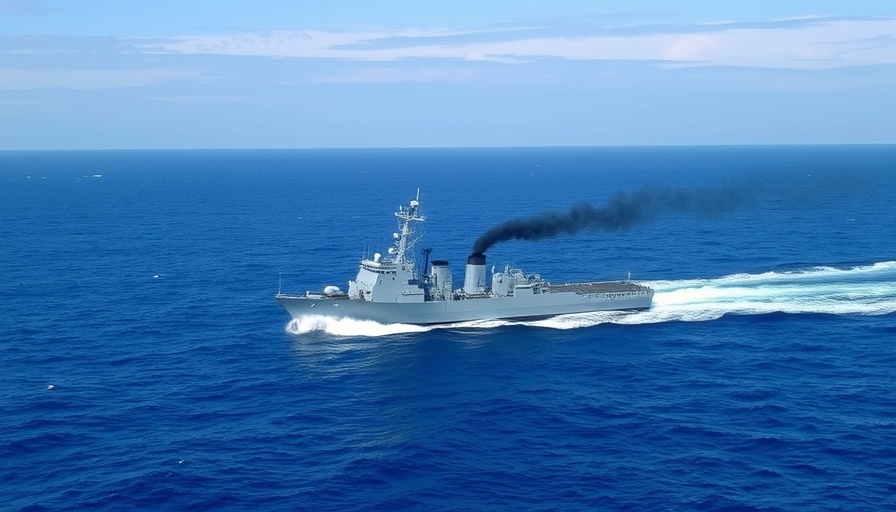
China's Naval Expansion: A New Era of Amphibious Warfare
China has once again showcased its military capabilities by unveiling the CNS Hubei, the fourth Type 075 Amphibious Assault Ship. Designed primarily for launching amphibious landings, this vessel significantly enhances the operational capacity of the People’s Liberation Army Navy (PLAN). The launch, during training exercises in the South China Sea, comes amid rising geopolitical tensions and a concerted effort by China to assert its dominance in the South Pacific, alarming neighboring nations.
Strategic Implications of the Type 075
The Type 075 is engineered for diverse operations, including moving troops and equipment via helicopters, and deploying landing craft, tanks, and armored vehicles from its interior. This multi-faceted approach marks a shift in naval warfare, as it seeks to enable quick and effective responses to threats in contested waters. The strategic agility offered by the Type 075 reflects China’s commitment to modernizing its naval forces to expand its influence in key maritime regions.
A Fractured South Pacific: Rising Concerns
The launch of the CNS Hubei is not merely a display of military prowess; it’s part of broader patterns of aggressive maneuvers by China in the South Pacific. Reports indicate that China has deployed around 11 Coast Guard vessels to the contentious Second Thomas Shoal, following a history of alarming actions, including targeting Philippine ships with water cannons. As regional nations contend with such provocations, there is growing trepidation about China's intentions and the potential for military bases in the Pacific, akin to the Ream Naval Base recently funded by China in Cambodia.
Local Perspectives and International Responses
Fiji’s Prime Minister, Sitiveni Rabuka, made headlines last month by asserting that a Chinese military base in the Pacific Islands would be unwanted, reflecting a growing sentiment among Pacific nations that seek to maintain sovereignty amidst external pressures. Additionally, Australian officials have voiced their concerns regarding Chinese military activities affecting commercial flights, showcasing the significant impact these developments have on regional stability and security.
Future Trends: What's Next for the Pacific?
The geopolitical landscape of the South Pacific is undergoing significant changes. Experts suggest that if China continues to bolster its military capabilities, we could foresee deeper conflicts over maritime rights and territories. With nations like the Philippines and Australia ramping up their defense strategies, the possibility of military partnerships and alliances might emerge to counterbalance China’s influence in the region.
Conclusion: Preparing for Uncertain Waters
As the PLAN continues to expand and modernize, the South Pacific's security dynamics are likely to shift. How neighboring countries respond and adapt will be crucial in determining the future of regional security. This era of military advancement necessitates a detailed analysis and strategic foresight from Pacific nations to navigate the challenges ahead.
 Add Row
Add Row  Add
Add 




Write A Comment